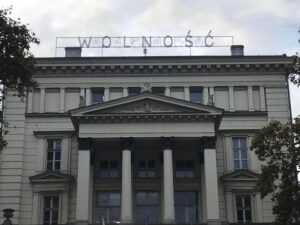Introduction
The first settlers appeared in today’s Poznań in the Palaeolithic era. During archaeological research, monuments of the Lusatian and Pomeranian culture were found, as well as products from the period of the Przeworsk culture. Material evidence of the presence of the Polans dates from the 7th century onwards.
In the 10th century, the first stronghold was built on Ostrów Tumski. Later, in the 11th century, this small stronghold became the “capital” of Poland (together with Gniezno) and the residence of Poland’s first monarchs. The first Polish cathedral was built there in 968. In the 13th century the Old Town was developed on the left bank of the Warta river. The town received municipal rights in 1253 with these rights came duty-free trade privileges. At this point Poznań became a major European trade centre, and reached its peak in economic and cultural in the 15th and 16th centuries. In this period Lubrański Academy, the first school with university aspirations in Poznań was founded there. In the 17th century the city declined because of fires and wars.
The annexation of Poznań by Prussia in 1793 reinforced the Germanization that had begun as early as the 13th century with the arrival of the first German settlers. From 1807 to 1815 the city was part of the Grand Duchy of Warsaw before returning to Prussian control. In the 1870s, German Chancellor Otto von Bismarck enacted anti-Polish and anti-Catholic measures. A Colonial Council was formed in 1886 to buy Polish land for German colonists, but the Poles established cooperative credit organisations and went on to defeat Prussian efforts to control Posen. At the beginning of the 20th century, a large number of buildings were built to give the city a Prussian face, and Poznań was renamed to Posen.
Meanwhile, Poznan’s economy developed, its population tripled between 1871 and 1910, and its citizens defeated their Prussian overseers in 1918. Poznań prospered somewhat between the two world wars, but with the return of the Germans in 1939, the city was devastated; its inhabitants were deported or exterminated. Russian troops defeated the Germans in a 1945 siege, leaving the city in ruins. Poznań was rebuilt after World War II and became the administrative, industrial and cultural centre of western Poland. As one of Poland’s largest industrial centres, Poznań has diverse industries including metallurgical plants; textile mills; garment and food, metal and rubber processing plants; chemical plants; and an automobile factory. It has been the site of major international trade fairs since 1921.





